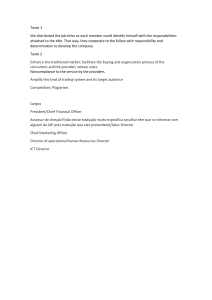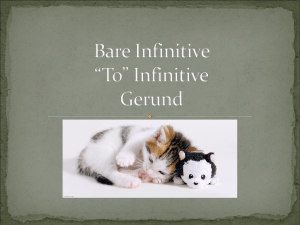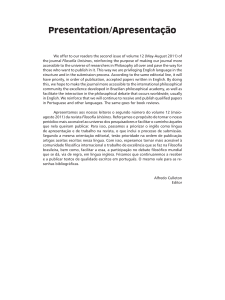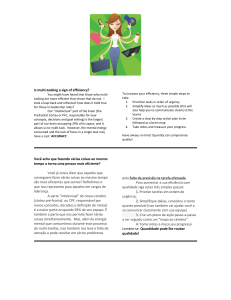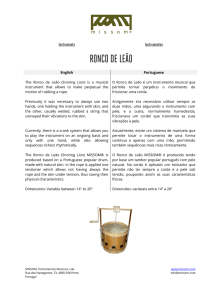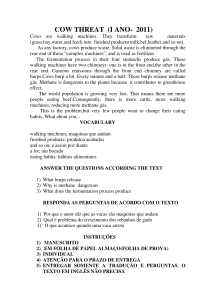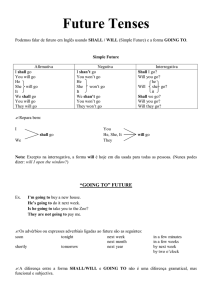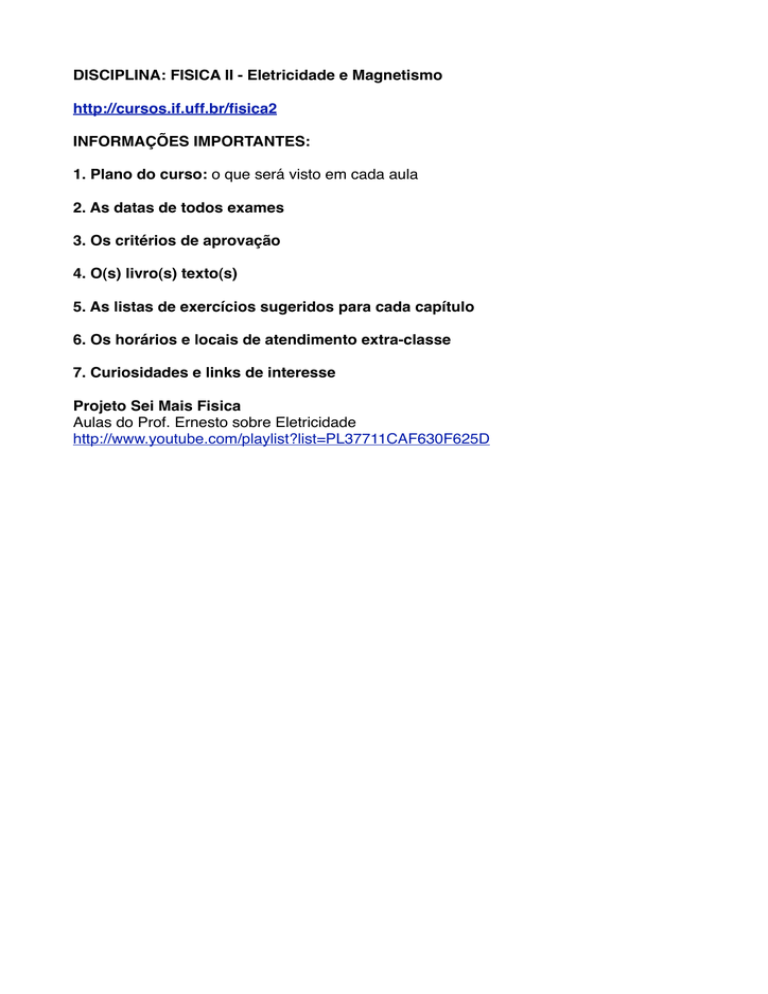
DISCIPLINA: FISICA II - Eletricidade e Magnetismo
http://cursos.if.uff.br/fisica2
INFORMAÇÕES IMPORTANTES:
1. Plano do curso: o que será visto em cada aula
2. As datas de todos exames
3. Os critérios de aprovação
4. O(s) livro(s) texto(s)
5. As listas de exercícios sugeridos para cada capítulo
6. Os horários e locais de atendimento extra-classe
7. Curiosidades e links de interesse
Projeto Sei Mais Fisica
Aulas do Prof. Ernesto sobre Eletricidade
http://www.youtube.com/playlist?list=PL37711CAF630F625D
FISICA II - Eletricidade e Magnetismo
600 aC os gregos já conheciam a atração elétrica (eletrização) e a magnetita.
Só 2400 anos depois, Oersted (em 1820) descobriu que os fenômenos elétricos e
magnéticos estão interligados: corrente elétrica produz campo magnético.
No século XIX Faraday e Maxwell deram contribuições extraordinárias para esse campo
do conhecimento. Faraday mostrou que o reverso também acontecia: da mesma forma
que eletricidade gera magnetismo, magnetismo pode gerar eletrecidade. Suas
descobertas e as de outros pesquisadores culminaram com a formulação da teoria
eletromagnética (por Maxwell), que unificou a descrição dos fenômenos elétricos,
magnéticos e ópticos. Maxwell conseguiu sintetizar matematicamente a descrição de
todos os fenômenos elétricos e magnéticos conhecidos com quatro equações interligadas
(as famosas quatro equações de Maxwell) e provou que a luz é uma onda
eletromagnética.
O impacto na sociedade foi imenso: a luz elétrica, os motores elétricos, as transmissão de
voz (rádio, telefonia), depois imagem (televisão), a descoberta do laser, das fibras ópticas,
a capacidade de transmitir informação em enorme quantidades e com altíssima
velocidade (dados, som e imagem), o controle do transporte de carga elétrica permitiu o
desenvolvimento de aparelhos eletrônicos, etc ...
Um dos objetivos desse curso é apresentar alguns fundamentos dessa teoria a voces.
Vamos começar com as primeiras experiências:
vidro atritado com
seda
plástico atritado com
pele de coelho
vidro com seda
plástico com pele
REPELE
REPELE
ATRAI
1. Atrita-se dois bastões de vidro com seda, sendo que um deles está pendurado em uma
linha de naylon. Ao aproximar os dois bastões, observamos que eles se repelem.
2. Atrita-se dois batões de plástico com pele animal (pele de coelho por exemplo), sendo
que um deles está pendurado em uma linha de naylon. Ao aproximar os dois bastões,
observamos que eles também se repelem.
3. Entretanto, ao aproximar o bastão de vidro atritado com seda do bastão de plástico
atritado com pele, ou vice-versa, observamos que eles se atraem.
Construção lógica:
1. A esfregação transfere algo entre o bastão e o esfregão.
2. Existem dois tipos desse algo.
3. Algo do mesmo tipo se replem, de tipos diferentes se atraem.
Chamamos esse algo transferido de carga elétrica.
Há dois tipos de carga elétrica: chamamos de carga positiva e carga negativa.
Cargas de mesmo sinal se repelem, e cargas de sinais opostos se atraem.
No caso relatado, o vidro (+) a seda (-); o plastico (-) e a pele animal (+)
Fenômenos eletrostáticos (cargas em repouso) são frequentes, principalmente em regiões
de clima seco, por exemplo os choques (descargas elétricas) em maçanetas.
Os raios são os mais exuberantes (Franklin mostrou que decorrem de transferência de
cargas elétricas entre a nuvem carregada e o para-raios), tal e qual as faíscas na
maçaneta, só que em escala muito maior.
4. Cargas elétricas fluem com facilidades distintas através de diferents materiais.
Se elas fluem com facilidade o material é classificado como condutor de eletrecidade;
se elas não fluem, ou o fazem com extrema dificuldade, o material é classificado como
isolante. Entre esses dois extremos encontram-se os materiais semicondutores. Neles,
em certas condições as cargas fluem e outras não (depende da temperatura, da
intensidade do estímulo elétrico feito para elas fluirem, entre outros fatores)
• O Cu, Au e Ag são excelentes condutores.
• A borracha, plasticos em geral, são isolantes
• GaAs, Si, GaAsxAl1-x são semicondutores
5. Cargas são quantizadas: experiência de Millikan
e=1.602176487(40)×10−19 C
6. Coulomb (C) é a unidade de carga: dq = idt
1 C = quantidade de carga que passa através de uma seção reta de um condutor quando
nele flui uma corrente de 1A
An electrostatics puzzler
http://serc.carleton.edu/sp/compadre/demonstrations/examples/48756.html
nçana 1, 08292 Esparreguera, Barcelona, Spain; acort
Demonstrations of Coulombʼs Law with
an Electronic Balance
Adolf Cortel, IES El Cairat, Gorgonçana 1, 08292 Esparreguera, Barcelona, Spain;
[email protected]
Referência: Physics Teacher Vol. 37, Oct. 1999
Fig. 1. Setup for measuring force of repulsion,
using electronic balance and two charged balls.
able to
ly.6 So
tabulat
against
balls. F
the bala
fit of th
ments t
gives v
-2.0,
Coulom
It is
plete th
the cha
balls,
Coulom
cal cha
ment c
nC and
N
o
t
e
strations of Coulomb’s Law
Electronic Balance
ES El Cairat, Gorgonçana 1, 08292 Esparreguera, Barcelona, Spain; [email protected]
Q
Q
Q/2
Q
Q/2
measurement of
able to take the measurements quicks force is done by
ly.6 So move the upper ball gradually,
1,2
orsion balance.
tabulating the reading of the balance
ssible to use an elecagainst the distance between the
m
m/2
to measure weak
balls. Figure 2 plots the readings of
ler and straightforthe balance at different distances. The
he demonstrations
fit of the values from several experiFig. 3. Touching upper ball with an equal and discharged ball demonstrates
use a very simple
ments to a function of the type F! db
that force of repulsion is directly proportional to the charge.
Fig. 4. Linear correlation between reading of balance and charge of
the repulsion force
gives values of
b between -1.8 and
uppper ball.
ctric charges. With
-2.0,
in
good
agreement with
References
To show that a charged body
7
5. We use a plate of PVC that is
ents can prove• that
Coulomb’s
law.
1. E. M. Rogers, Physics for the
attracts
a
neutral
one.
First,
charge
ctly proportional to
It isMind
interesting
and easy to com- rubbed with a sweater, and a
Inquiring
(Princeton,
disk about 10 cm in diameter
the ball on the plate of the balance.
versely proportional
the1960),
demonstration
New plete
Jersey,
pp. 541-by measuring that has an insulated plastic
Q/2
the distance. Bring
As a another discharged ball over
542. the charge and the potential of the handle. If the charged balls are
the
allows for demon-first to a distance of about 1 cm.
assumingPhysics
the validity of brought into contact, their elec2. H. balls,
F. Meiners,
henomenon of The
elec-balance will show an attraction
Coulomb’s
law.
We
found the electri- trical charge will be the same.
Demonstration Experiments
force (negative reading). Now touch
n.
cal
charge
of
the
balls
Fig. 1. Setup for measuring force of repulsion,(Ronald Press, New York,in the experi6. To minimize discharge of the
the top of the
upper ball with one finusing electronic balance and two charged balls.
1970),ment
Vol. corresponding
2, Chap. 29. to Fig. 2 to be 76 balls, it is advisable to clean the
ger; the attraction force increases.
nC and
their potentialon
23 kV.
3. A. Cortel,
“Demonstrations
Plexiglas handles with alcohol.
Figure 5 shows the interpretation
Christmas-tree balls,
paramagnetism
with
an
elecWe have observed that the main
Demonstrations
cm in diameterof these electrostatic induction
To showJ.that
theEduc.
electric force is cause of the loss of charge is
tronic• balance,”
Chem.
observations.
• To show that the electrical force is 75, 61-63
directly
proportional to the charge. due to the point effect of small
(1998).
™ tubes (30 cm in
These inversely
demonstrations
using
an
proportional to the square
Charge
thea balls
and move
them to a hairs or threads adhering to the
in
diameter)
4. A balance
with
sensitivity
of
emonstrates
electronic of
balance
are lessCharge
complicatthe distance.
the balls with 0.01 distance
of
about
9
cm
(15 cm balls, and so we prefer to use a
Fig. 4. Linear correlation between reading
of balance and charge of g is a standard piece of
lance with a sensi5 Because
ed
than
measuring
the
angle
between
an
electrophorus.
the
balls
between
centers).
Write
down
the sweater rather than fur to rub
equipment that is easy to move
ball.
g or better4 uppper
two balls hung
by threads
and
make it is advis- and reading
the electrophorus. Obviously,
ces
discharge,
though
slowly,
on
the
balance.
Now
touch
5. We use a plate of PVC that is level, and can measure
ts, Rogers,
hot glue,
-3
doing the demonstrations on
unnecessary
to purchase
specialized
the
upper
ball
with
a
disM.
Physics
for the
with a sensitivity of 10
rubbed with a sweater, andforces
a
(and expensive) equipment.
uiring Mind (Princeton,
charged
thirdareball (Fig. 3). wet days is to be avoided.
N. Less sensitive
balances
disk about 10 cm in diameter
w Jersey, 1960), pp. 541not suitable. Half of its electrical charge
7. If the distance between the
that has an insulated plastic
.
handle. If the charged balls are
will be removed from the balls is less than 8 cm, the valF. Meiners,
Physics
brought into contact, their eleco attach
one
ball; write down the new ues do not fit well to a function
2
monstration
trical charge will be the same.
ubes to each Experiments
reading on the balance. of F ! 1/d . The charge distribnald Press, New York,
6. To minimize discharge of the
ball with its
Repeat this operation several ution will not be spherical
0), Vol. 2, Chap. 29.
balls,
it
is
advisable
to
clean
the
ally on the
times, each time draining half because of the repulsion
Cortel, “Demonstrations on
between the charges.
Plexiglas handles with alcohol.
ce, held by a
of the remaining charge. A
amagnetism with an elecWe have observed that the main
nic balance,”
the tare.J. Chem. Educ.
plot of the readings on the
cause of the loss of charge is
stand,
a
nut,
balance versus the charge
61-63 (1998).
due Q
to the point effect of small
Q
Q
Q
ange
another
will be a straight line (Fig. 4),
hairs or threads adhering to the
alance with a sensitivity of
corresponding to a force
balls, and so we prefer to use a
1meters
g is a over
standard piece of
sweater rather than fur to rub
h its handle
directly proportional to the
ipment
that is easy to move
the electrophorus. Obviously,
level, ruler,
and can measure
ertical
charge.
doing the demonstrations on
es with
a sensitivity of 10-3
sed
to meaFig. 2. Plot of sample readings
electronic
vs distance between
wetof days
is to balance
be avoided.
Less
sensitive
between
the balances
balls. are
suitable.
-0.98 g
7. If the distance between the
balls is less than 8 cm, the values do not fit well to a function
ulomb’s Law with an Electronic Balance
Vol. 37, Oct. 1999
THE PHYSICS TEACHER
of F ! 1/d2. The charge distribution will not be spherical
Fig. 5. Electrostatic induction.
Neutral conducting
is “polarized” and attracted when put over a
because
of the ball
repulsion
charged ball.
between the charges.
0.00 g
Q
448
THE PHYSICS TEACHER
-0.34 g
Vol. 37, Oct. 1999
447
Demonstrations of Coulomb’s Law with an Electronic Balance
two balls hung by threads and make it
unnecessary
to purchase specialized
Indução elétrica
(and expensive) equipment.
Q
0.00 g
equipment that is easy to move
and level, and can measure
forces with a sensitivity of 10-3
N. Less sensitive balances are
not suitable.
Q
Q
-0.34 g
sweater rather than fur to rub
the electrophorus. Obviously,
doing the demonstrations on
wet days is to be avoided.
7. If the distance between the
balls is less than 8 cm, the values do not fit well to a function
of F ! 1/d2. The charge distribution will not be spherical
because of the repulsion
between the charges.
Q
-0.98 g
Fig. 5. Electrostatic induction. Neutral conducting ball is “polarized” and attracted when put over a
charged ball.
448
THE PHYSICS TEACHER
Vol. 37, Oct. 1999
Demonstrations of Coulomb’s Law with an Electronic Balance



